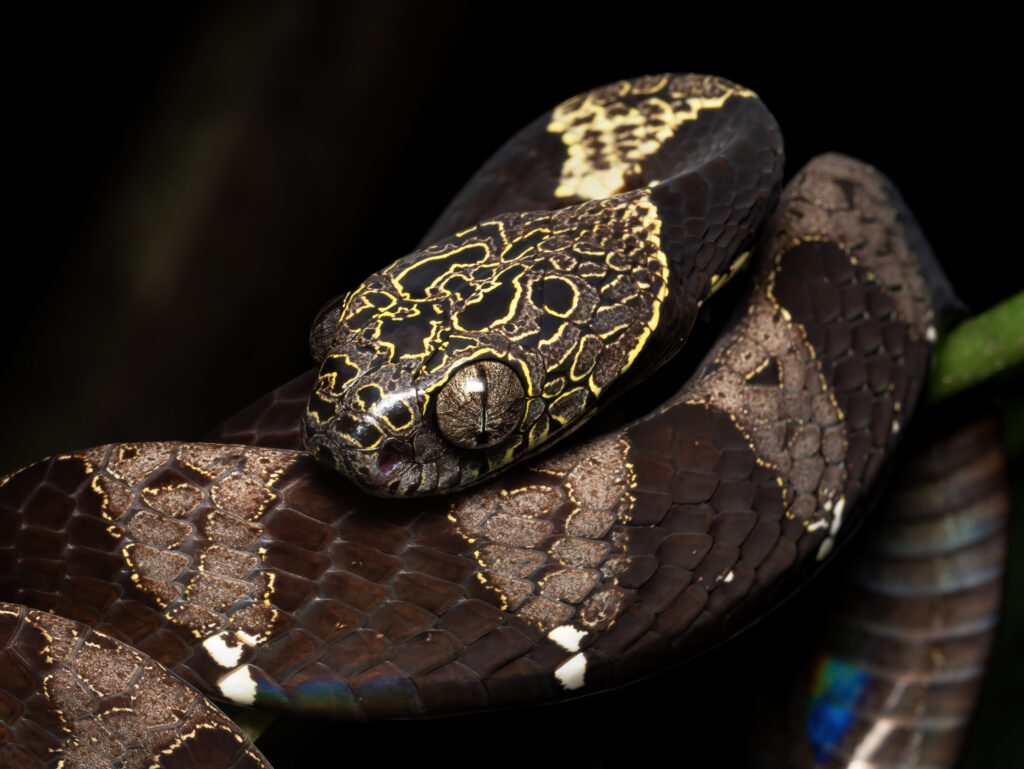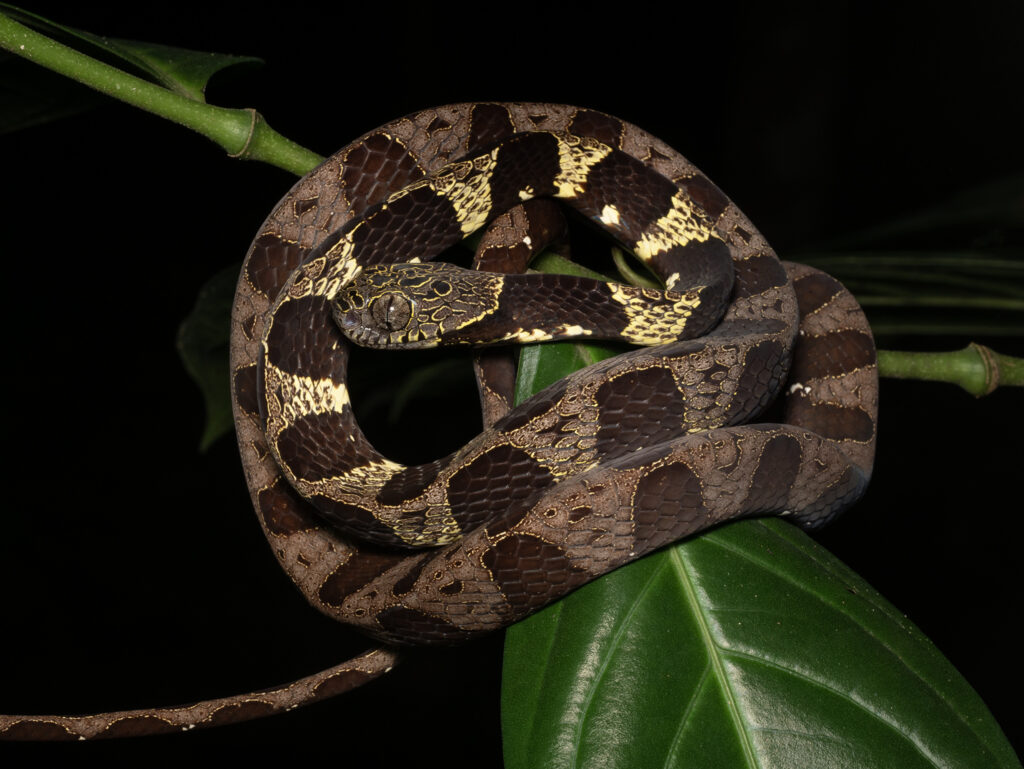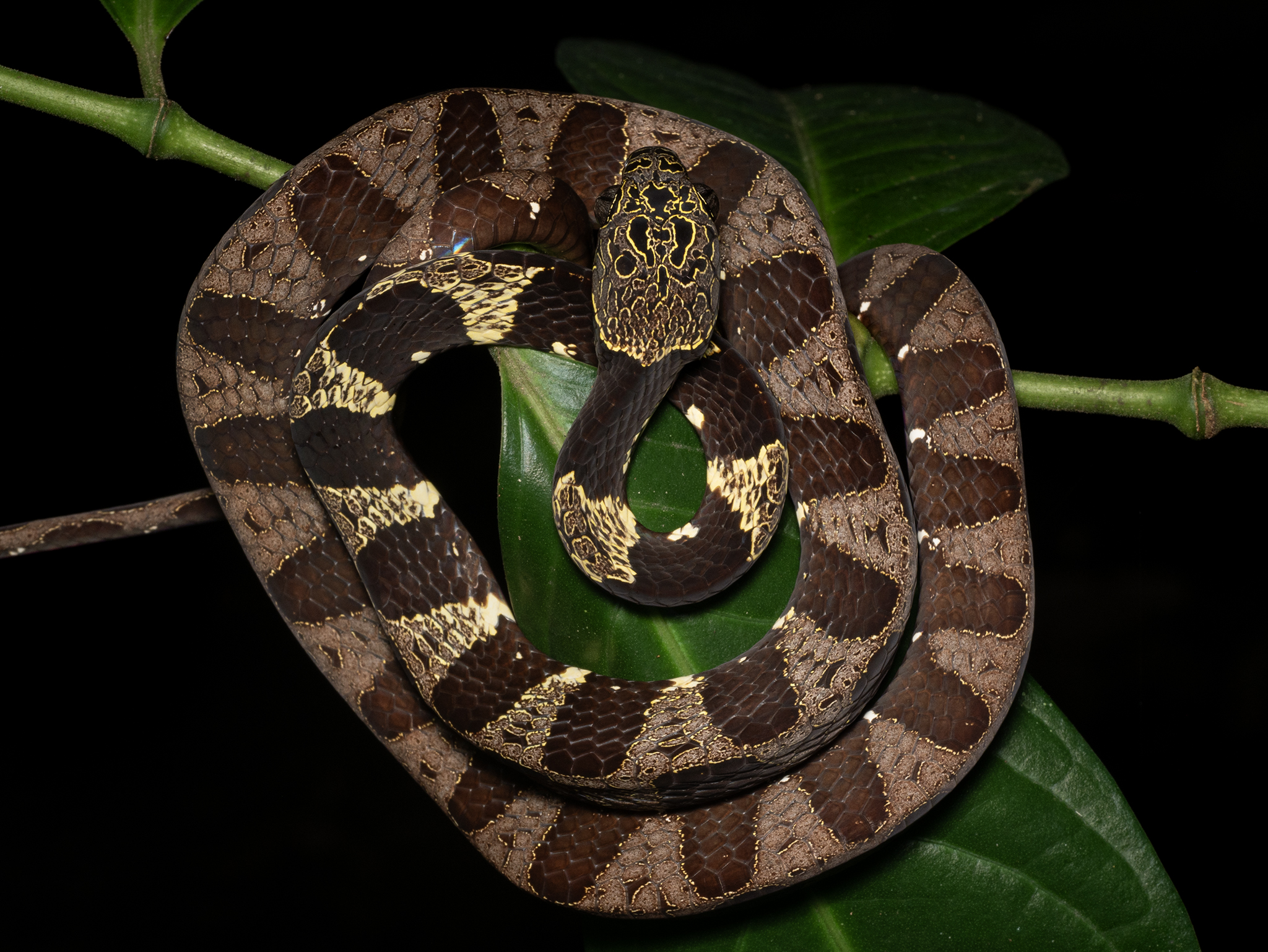A beautiful snake to encounter… unless you happen to be a snail.
Neotropical Snail-Eaters are, as the name suggests, specialised hunters of snails and slugs, and they’ve evolved a range of impressive tactics for taking down their prey.
These snakes are located throughout the tropical regions of South America, and while they’re typically found on trees or low-level vegetation, they also take their snail-snatching into the leaf litter.

You may have noticed that snails and slugs leave a trail of mucus behind them wherever they go, and Snail-Eaters take advantage of this by using chemical receptors to detect the trails, before patiently following them to their next meal.
Once a snail is encountered, the snake grabs the underside with its jaw and curls its body around the shell to hold it in place. From there, it uses its extra long teeth and a distinctive back-and-forth jaw movement to begin consuming its prey.
Neotropical Snail-Eaters also have a unique gland in their lower jaw that is capable of releasing a mucous substance. It was previously thought that this substance may contain chemicals that detach snails from their shells, or perhaps even a toxin designed to paralyse or kill the snails. However, recent research has shown that the substance is likely just a secretion that aids with swallowing slippery prey, similar to our own saliva. Indeed, it seems that the snakes simply yank the snails from their shells using little more than brute force.
While their triangular head and cryptic patterns mean that they are occasionally mistaken for venomous pit vipers, Neotropical Snail-Eaters are non-venomous, and completely harmless to humans – probably because we don’t taste as nice as snails!

–
Neotropical Snail Eater (Dipsas indica), Manu Biological Station, Peru


